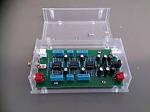Here is one method to capture your computer measurements
from your computer screen.
To capture only a window that is selected:
Press
ALT and
Print Screen
keys at the same time.
OR
To capture the whole computer screen image:
Press the
Print Screen key.
Then open your paint program and paste
the capture:
Press
CTRL and
V keys.
Your window/screen is now in your paint program.
Save it in a JPEG format.
Note, the generic paint program is listed
under the Start Menu:All Programs:Accessories:Paint
When saving, look and see where Windows
puts the file...it can get real tricky to find again.
IMG or BMG files are huge.
JPG (Joint Photographic Expert Group)
has algorithms that compress the file size
down to make it easier to send and receive.
Here is my screen capture:
https://origin.dastatic.com/forums/ga...rintScreen.jpg















